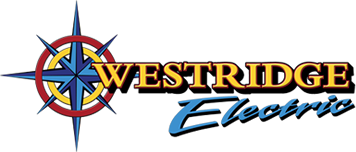
This 5 Minute Check Can Save Your Life
You’ve invested in carbon monoxide (CO) and smoke detectors to keep your family safe. But are they really keeping you protected? Making monthly alarm checks a part of your life will ensure that you get the warning you need when it’s time to evacuate your home.
Here’s how to quickly check your alarms.

How to Test Carbon Monoxide Detectors and Smoke Detectors
Always follow the alarm manufacturer’s instructions if you have them. If you don’t, many alarms can be tested using these steps.
Step 1: Alert Your Family
It’s important to tell everyone in your home that you’re going to do an alarm test, so they don’t think there’s a real Carbon Monoxide issue or fire.
Anyone with sensitive ears will want to use hearing protection, as the alarm can be painfully loud.
Step 2: Test
Press and hold the “Test” button on your alarm. It may take a take a few seconds, but if the alarm is working you should hear the siren at a really ear-piercing level.
Replace your alarm if:
- The sound isn’t very loud
- You hear nothing.
- The other alarms in the home don’t sound (as of 2014 all alarms must be interlinked – see code section below).
Step 3: Inspect
If your alarm is working, take a moment to remove it from the mounting bracket and inspect it.
- Carbon Monoxide detectors and smoke detectors expire every few years, so check the expiry date on the side or back of the alarm. If the expiry date has passed, replace the alarm even if it still works. If there is no date chances are good it’s expired.
- If the grille has dust, grease, or hair, give it a quick wipe with a damp cloth.
- If it’s been about six months since the batteries were replaced, replace them.
When to Test Carbon Monoxide Detectors and Smoke Detectors
Ideally, test your Carbon Monoxide detectors and smoke detectors once a month according to the Canadian Fire Safety recommendations; the US Fire Administration agrees. A calendar reminder can help you remember to do this. If you can’t do it monthly, do it twice a year at least.
Why so often? Electronic appliances can fail at any time, and an alarm can’t protect you if it’s not working. Also, the batteries can run down at any time (even if your alarms are hardwired they need battery backups in case of a power outage).
Code Requirements for Carbon Monoxide Detectors and Smoke Detectors
Carbon Monoxide Detector Code Requirements
As of 2014, Alberta building code requires Carbon Monoxide Detectors in all residential dwellings that share a wall with a garage and/or that contain fuel-burning appliances. Examples of these appliances include oil and gas furnaces, natural gas water heaters, gas stoves, and wood or gas fireplaces.
- You need an detector on every level of your home.
- You must have a carbon monoxide detector within 5 m (16.4 feet) of each bedroom.
- All carbon monoxide detectoes have to be interconnected so that if one alarm sounds, the rest will.
Smoke Detector Code Requirements
For smoke alarms, the rules are the same except:
- You also need a smoke detector in each bedroom and each hallway connected to a bedroom.
- Smoke detectors also need a hush feature and battery backup.
Make Sure You’re Really Safe from Carbon Monoxide and Fire
Every year, tragedies occur because people don’t have working alarms. This monthly check will help ensure you and your family are protected.
If you have questions, you can get more facts about the dangers of carbon monoxide here.
Westridge Electric
403-995-3547 (FLIP)
Written By:
Darrel Yashinsky,
President, Air Quality Dunrite
Vaughan’s Heating and Cooling Experts


